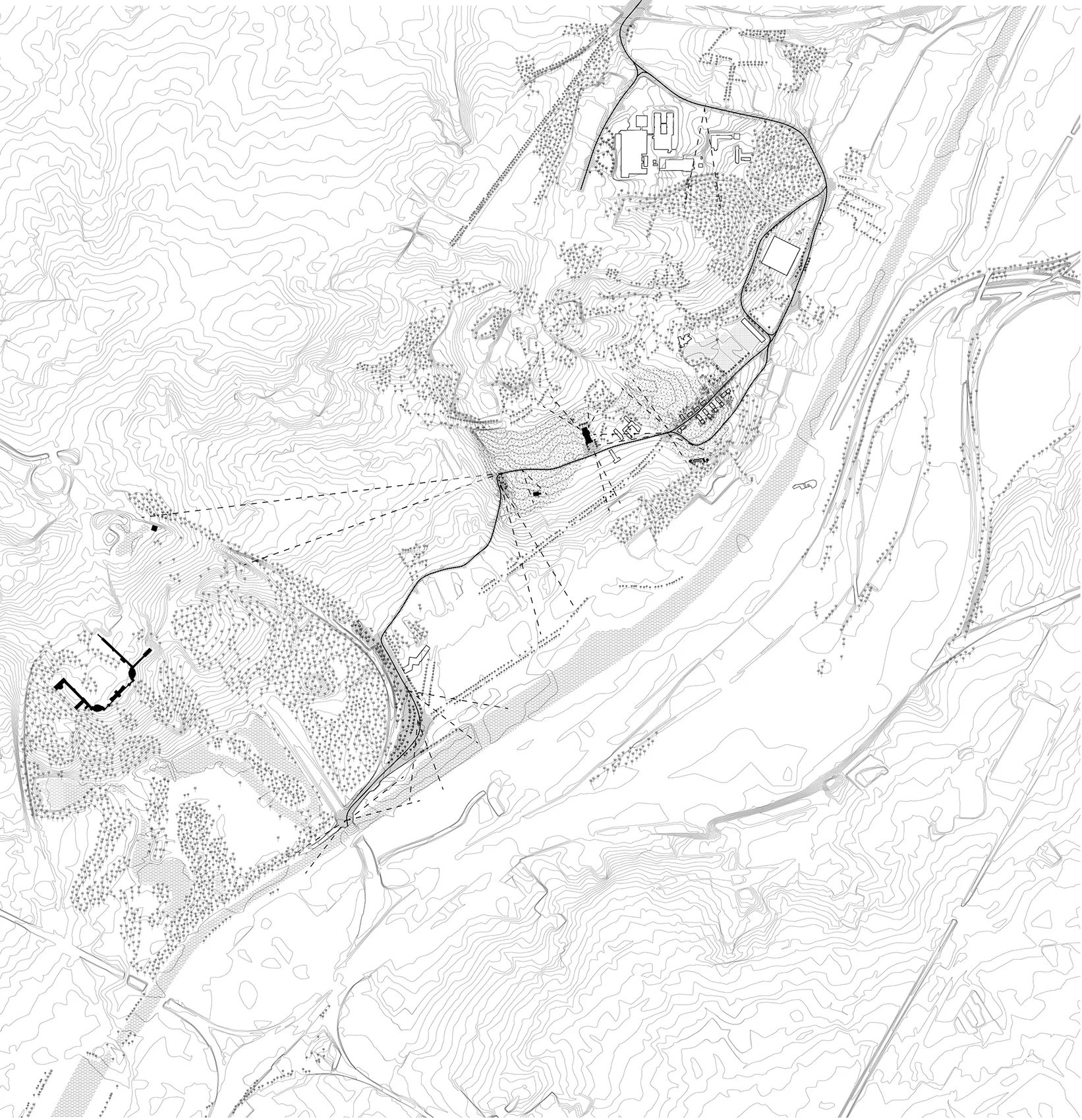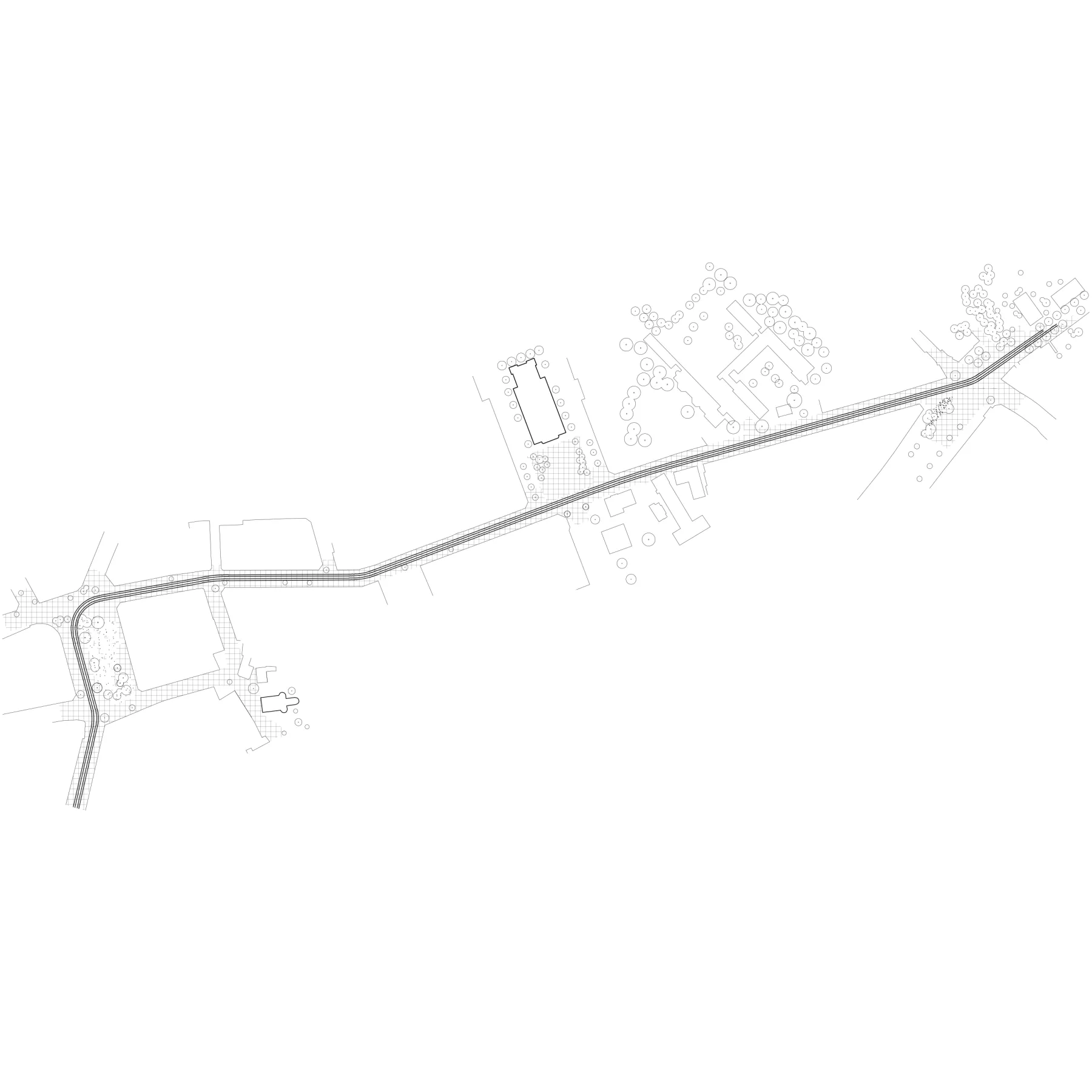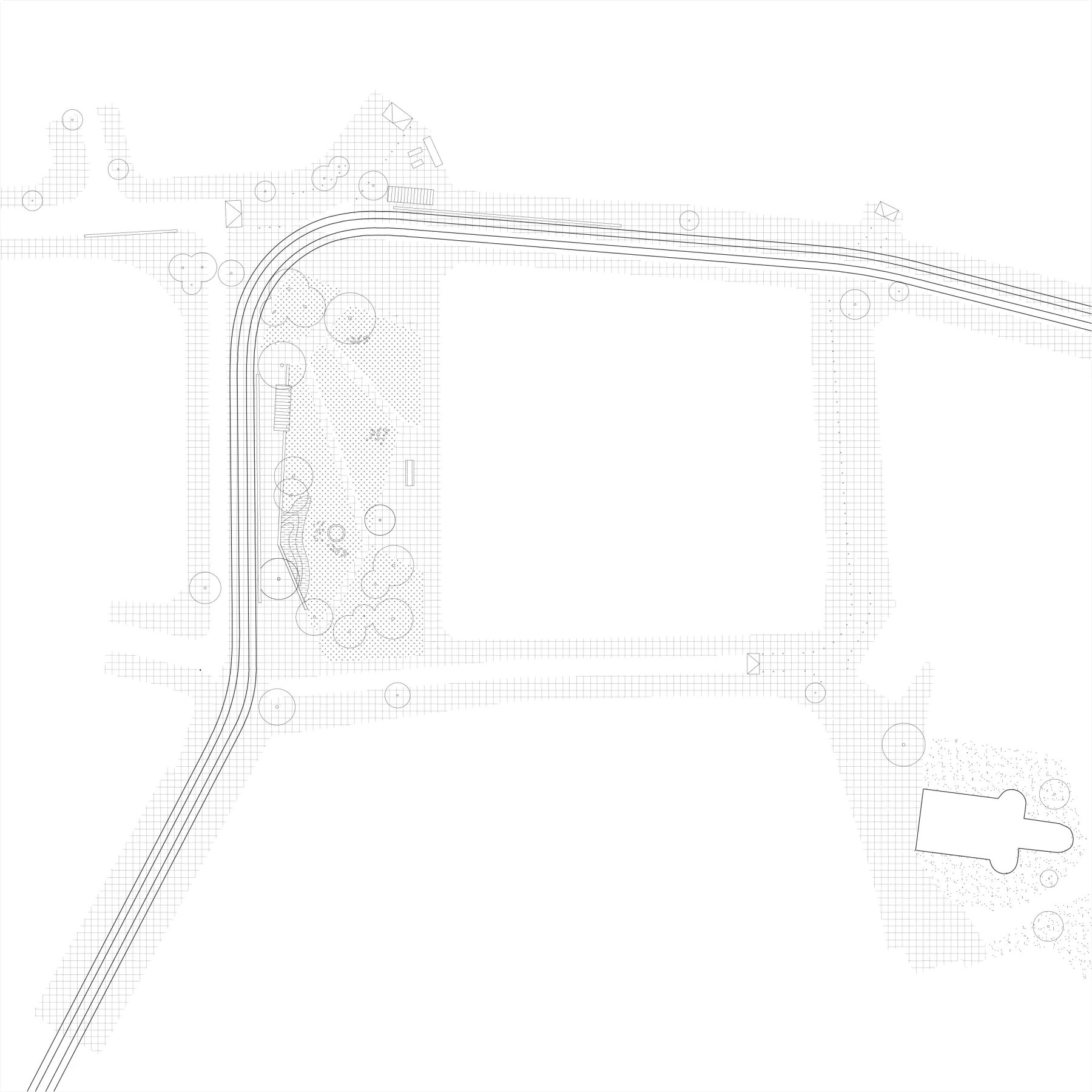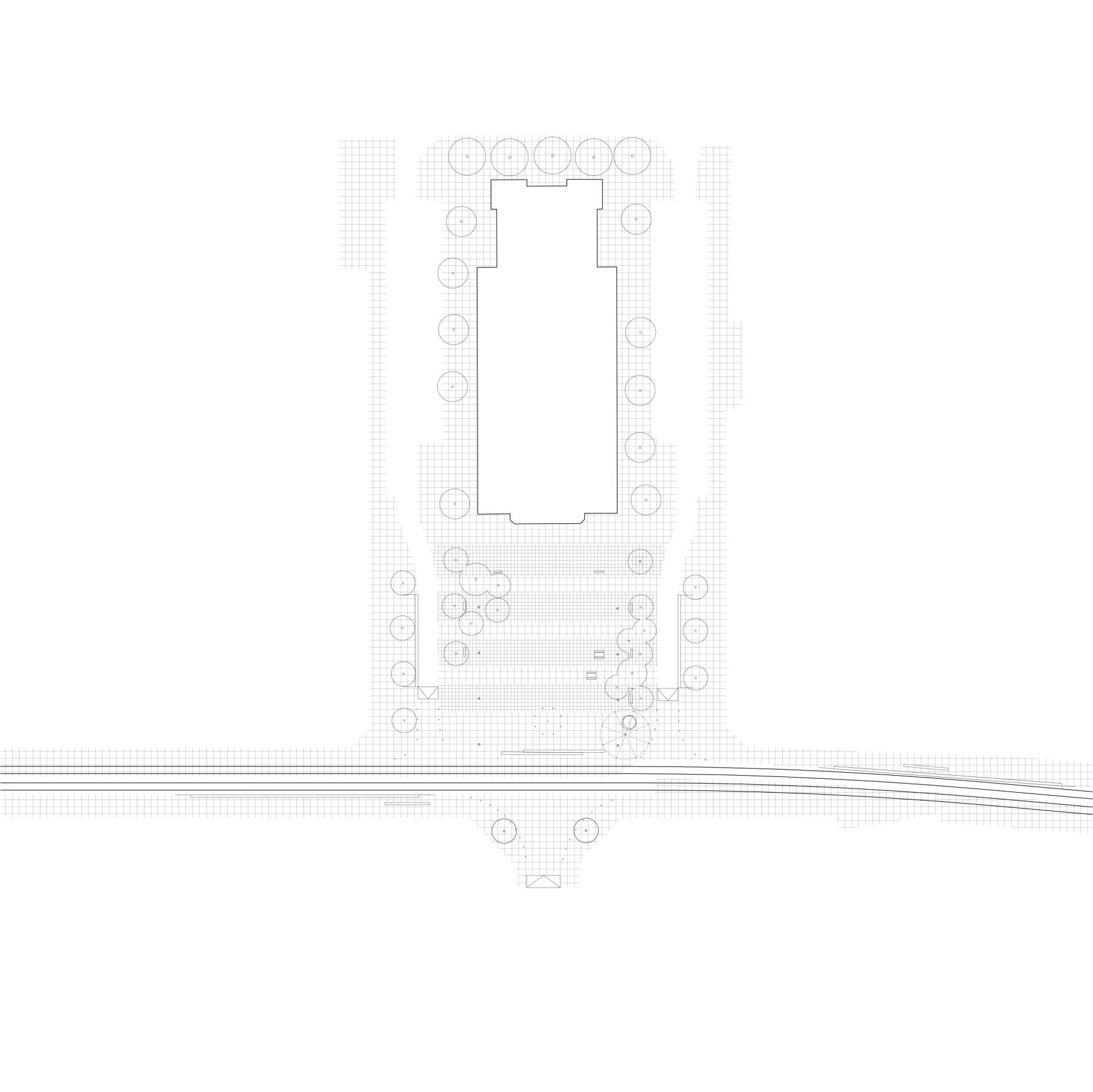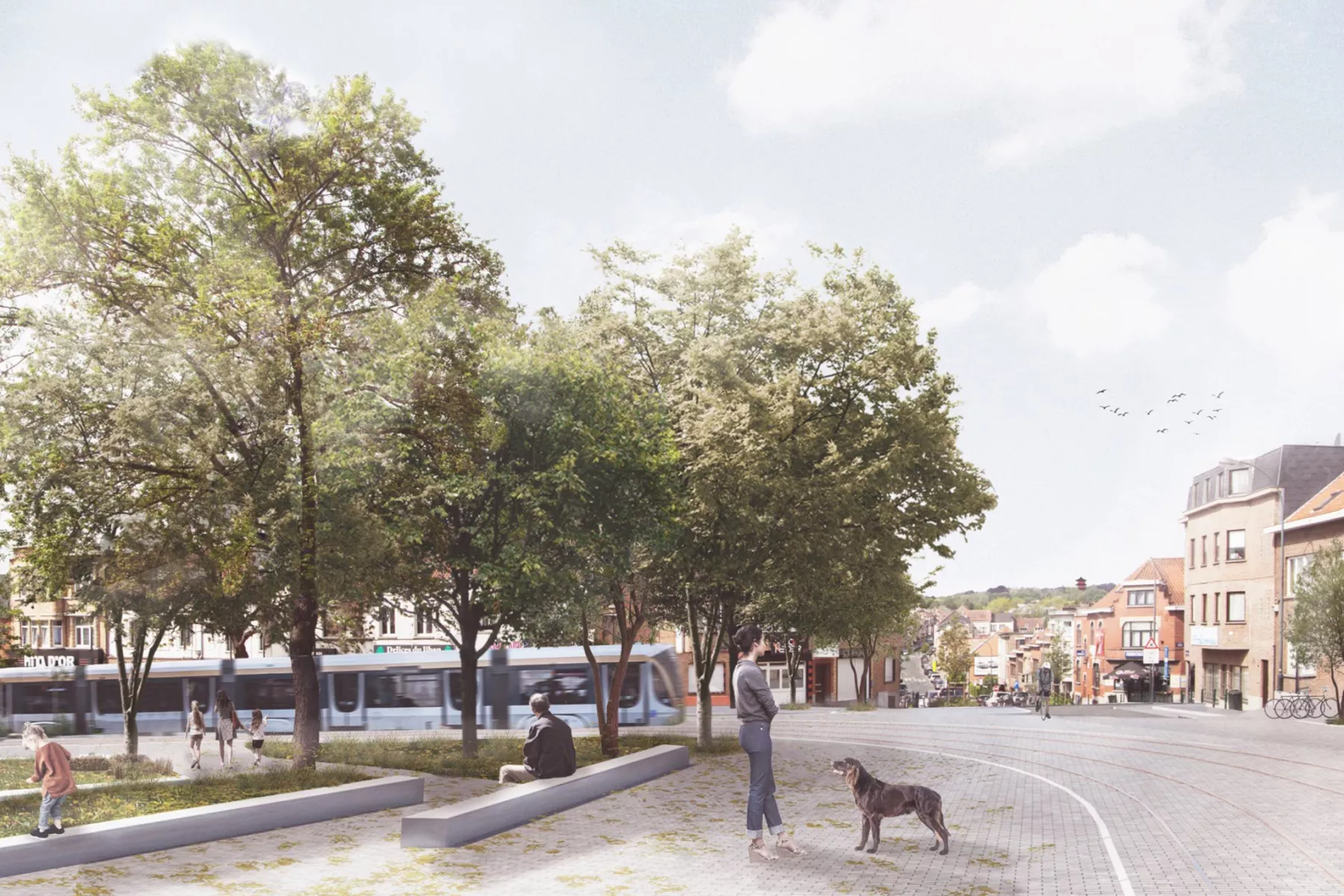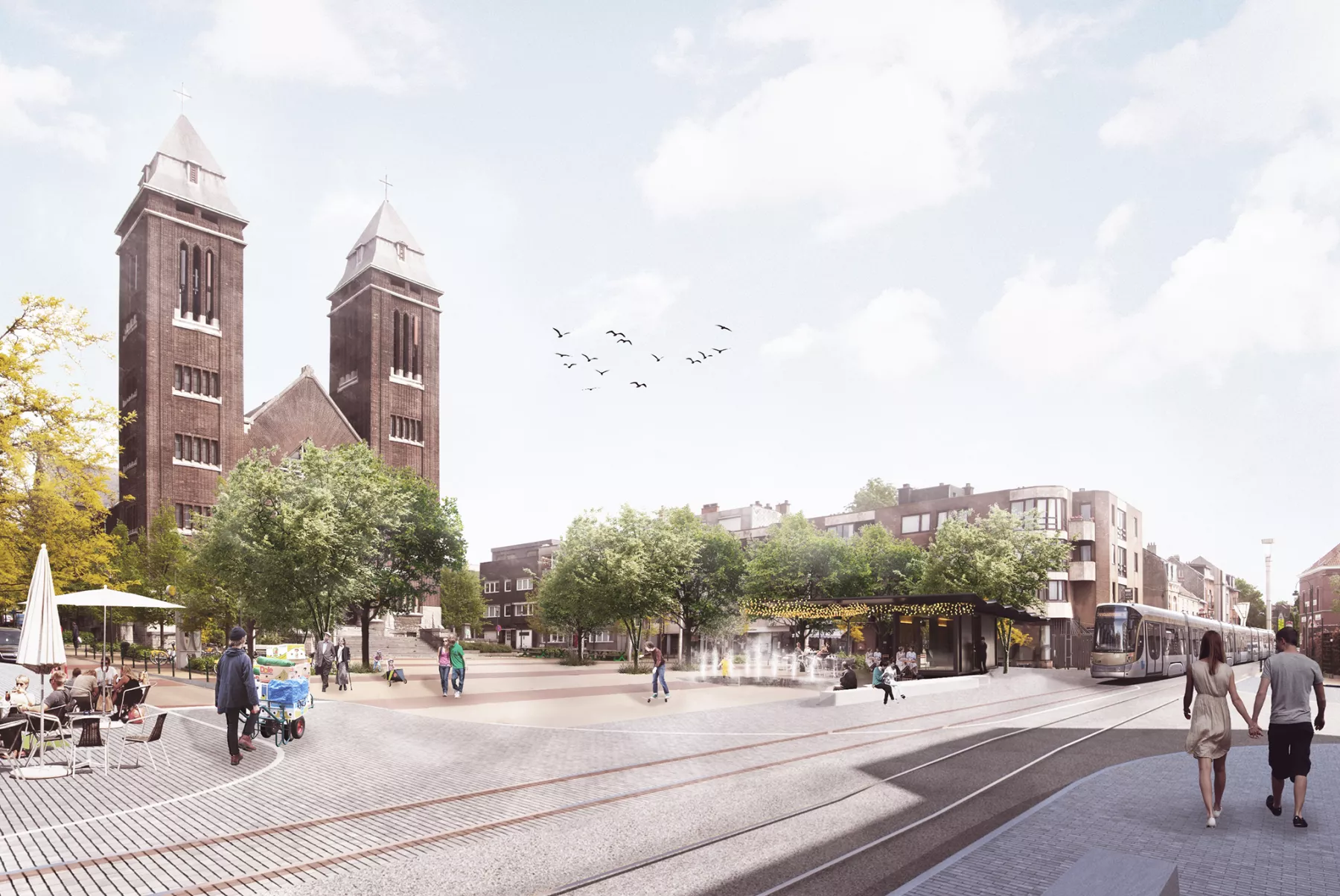- Location
1120 Neder-Over-Heembeek
Belgium
- Type
-
- Infrastructure
- Landscape
- Public space
- Year
- 2020
- Size : landscape + built
- 960 ha
- Type of procurment
- public
- Status
- competition
Tramline & public spaces NoH - « The Landscape Line ».
The Noh Tram Project aims to enhance the spatial qualities of the territory related to its topography, which offers remarkable distant perspectives on the city. The precise implementation and development of the tram lines and stops must meet both technical and functional criteria, as well as highlight the revealed landscape. The project will frame views of the city, such as the Royal Park, the canal with its lesser-known industrial archaeology, and fragments of countryside heritage. The new tram line will open windows onto a green area, providing oxygen and accessibility for all residents of the Brussels region as it continues to densify.
Neder-Over-Hembeek originated from the fusion of the villages of Neder and Over-Hembeek, which are located on the hillside between fertile peaks and the damp valley bottom. The villages are organized along the connection axis (today's Vekemans Street) with a gentle slope. To the west, Laeken Castle and its English gardens give it a natural aspect and a significant elevation, opening the horizon with wide views of Brussels. The park and its surroundings are home to many pavilions, with some "follies" acting as landmarks in the Brussels landscape. Elements like the Japanese tower and the castle's trees are visible from Neder-over-Heembeek.
The new tram line project will support these landscape and urban specificities. Our approach is to design the new infrastructure as a unique promenade through the landscape, emphasizing the natural or built elements encountered along the way. The project tools aim for harmonious mobility, integrating water pathways, sustainable implementation and materialization, and urban biodiversity in connection with the landscape. We also propose adjustments to parking, public transport networks, and car traffic circulation, as well as principles for tram line and stop implementation.
Despite a seemingly mineral appearance, the neighborhood still has hidden rural fringes behind the buildings. However, numerous construction projects in NOH put pressure on these green pockets. We pay special attention to the greening of public spaces to increase permeable surfaces and the tree canopy, which contributes to shading and limits urban heat island effects. The project plans to increase green space in squares and available spaces, choosing tree and plant species that offer seasonal variation, promote biodiversity, and improve the quality of life.
To achieve harmonious mobility, we propose to strike a balance between different transport modes while generating a higher quality of life and revitalizing the small Vekemans commercial hub. This approach will be developed through a participatory process, in dialogue with the region's services and users.
